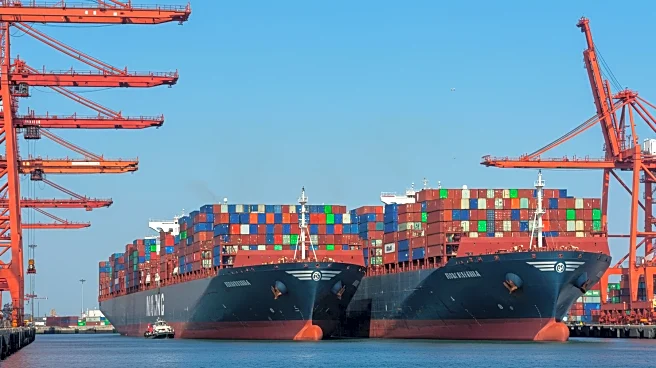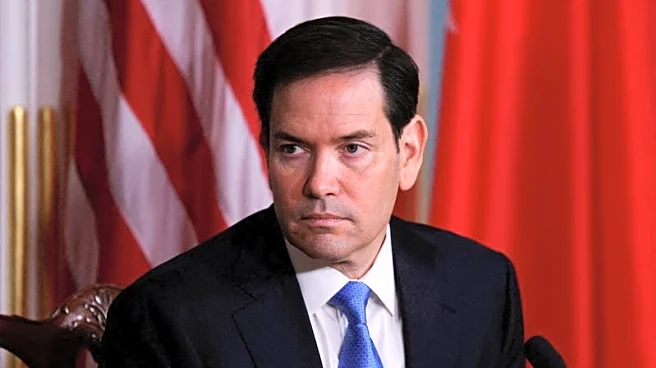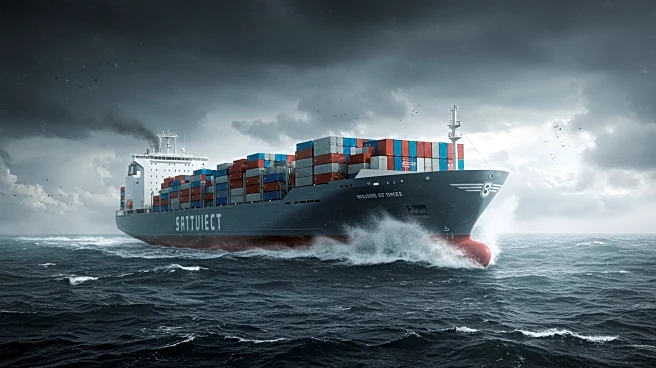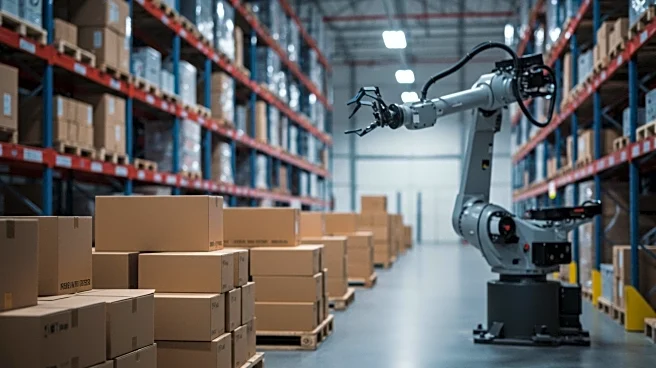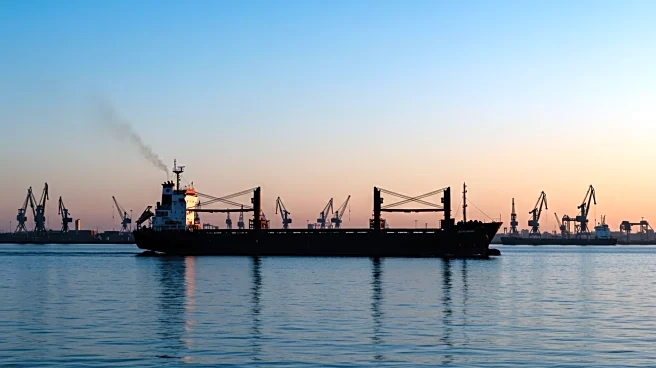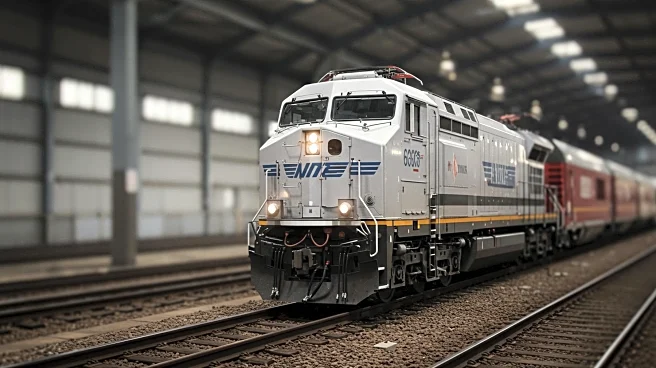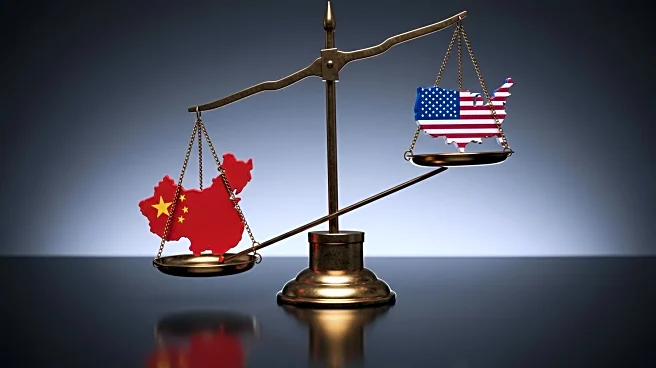What is the story about?
What's Happening?
The Ports of Los Angeles (POLA) and Long Beach (POLB) have reported record-setting volumes for July 2025, driven by importers pulling forward goods in anticipation of potential tariff hikes. POLA recorded a total volume of 1,019,837 Twenty-Foot Equivalent Units (TEU), marking an 8.5% annual increase and the highest monthly volume in its 117-year history. Imports at POLA reached 543,728 TEU, the highest monthly tally on record, while exports increased by 6% to 121,507 TEU. The Port of Long Beach also set a new July record with a total volume of 944,232 TEU, a 7% annual rise. Imports at POLB saw a 7.6% increase, although exports decreased by 12.9%. The surge in volumes is attributed to importers bringing in goods ahead of potential tariff increases, with POLA Executive Director Gene Seroka noting that inventory levels in the U.S. may have peaked.
Why It's Important?
The record volumes at these major ports highlight the ongoing impact of trade policies and tariff uncertainties on U.S. supply chains. The increase in imports suggests that businesses are stockpiling goods to mitigate the effects of potential tariff hikes, which could lead to fluctuations in inventory levels and supply chain disruptions. This situation underscores the broader economic implications of trade policy decisions, affecting sectors such as retail and agriculture. The ports' ability to handle increased volumes efficiently is crucial for maintaining the flow of goods, which is vital for U.S. businesses and consumers. However, the anticipated decline in cargo volumes in the latter half of 2025, as forecasted by POLB CEO Mario Cordero, could signal a period of adjustment and potential challenges for the logistics industry.
What's Next?
Looking ahead, the ports anticipate a potential decline in volumes as inventory levels stabilize and the effects of trade policy uncertainties continue to unfold. POLA's current estimate for August 2025 is between 850,000 to 900,000 TEU, which would be lower than the previous year. The ongoing trade policy developments and their impact on tariffs will be closely monitored by stakeholders, as they could influence future import and export activities. The ports are prepared to adapt to these changes, ensuring the efficient movement of goods despite potential fluctuations in volume.
AI Generated Content
Do you find this article useful?
